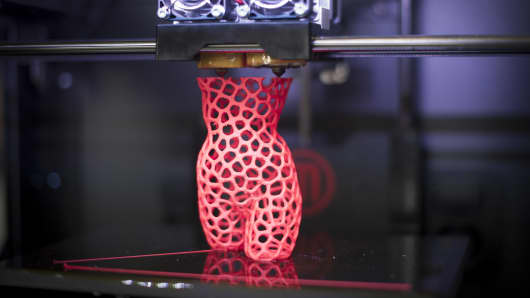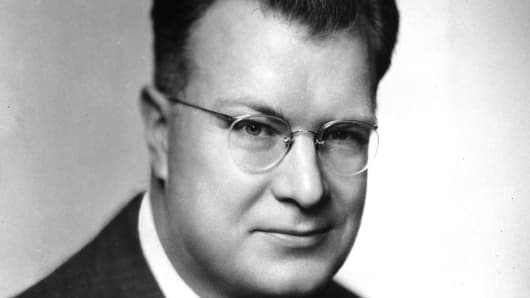The technology behind 3-D printing, which seems limited only by our imagination, could very well upend patent and intellectual property law. Goldman Sachs recently cited 3-D printing as one of eight trends poised to disrupt industries.
From utilitarian processes to the final appearance of designed objects ranging from jewelry to spare machine parts, get ready for a patent land grab of 3-D intellectual property. Industrial manufacturers are making shapes from fused bits of plastic and metal powder; shapes that previously weren't possible. They're looking up from their work on the shop floor and wondering, "Do I need a patent?"
"The last time I saw this kind of gold rush for patents was during the dot-com boom" of the late 1990s, said Peter Canelias, a patent attorney based in New York.
The 3-D technology has kept the Patent and Trademark Office busy, too. During the last decade, it has received more than 6,800 patent applications related to 3-D printing (also known as additive manufacturing). Since 2007, about 680 patents a year have been filed—39.6 percent more than 2002, when 487 patents were filed. Since 2003, the office has granted 3,500 patents related to 3-D printing.
But new technology of course brings questions and risks.
A unique phenomenon of 3-D printing is the "perceived right of public access to this technology," said Terry Wohlers, co-author of a recent report from consulting firm Wohlers Associates. Some groups advocate that 3-D programs and software should be "open source" and available to all users for the sake of innovation.
As prices fall and the technology spreads, it doesn't take a rocket scientist to imagine the speed at which counterfeit knockoffs can be printed.
"Additive manufacturing technology permits production of extraordinarily accurate duplicates of objects that are the subject of IP protections," said Teresa Rea, acting director of the Patent and Trademark Office, which is part of the Commerce Department.
From a smartphone cover to a replacement screw for a broken household item, just borrow a design you like from the Internet and print it yourself.
"Additive manufacturing technology has the potential to rewrite the rules for how we think about product liability," the Wohlers report said.
(Read more: 10 ways 3-D printing will blow your mind)







